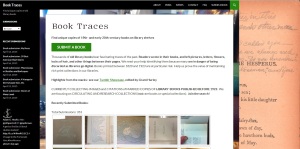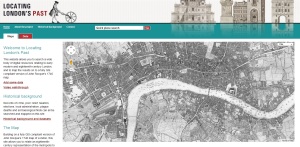1. Clear Objective/Topic
The purpose of the project should be clear, without users needing to dig deeper to find out why the site or project exists. Without a clear objective in mind, projects risk becoming too expansive, scattered, and/or diluted in their content and/or message, thereby limiting their relevance and usability.

2. User Friendly/Easy to Navigate
A good Digital Humanities project needs to be easy for users to navigate and use. An over-complicated design or interface makes the project less useful in the long run, since users need to be able to find what they’re looking for as quickly and easily as possible in order for the project to have any merit for scholarly/research purposes.
3. Visually Appealing/Appropriate
A good Digital Humanities project should be as aesthetically pleasing as possible, without the design distracting or deviating from the purpose of the project. This keeps the project interesting and engaging, and, if done right, can help further immerse users in the information contained within.

4. Scholarly
Digital Humanities projects should aim to be as scholarly as possible, providing relevant, consistent, accurate information that can be effectively used for research purposes.

5. Collaborative
It’s quite useful for a Digital Humanities project to be collaborative. Some projects allow users from around the world to contribute, while others are simply open to be updated over time by the researchers involved, never quite being “finished.”
How do Digital Humanities Projects Allow Scholars to Ask New Questions?
Digital Humanities allows scholars to ask new questions by making connections between topics and types of data that were never before so easily comparable. For example, a GIS mapping project can provide comparative, multi-era overlays of the same area, showing differences over time in some specific category, and it is able to do this all in the same space, in an interactive way. Digital Humanities makes the easy effortless, the possible easy, the difficult possible, and, in some cases, the impossible a reality.